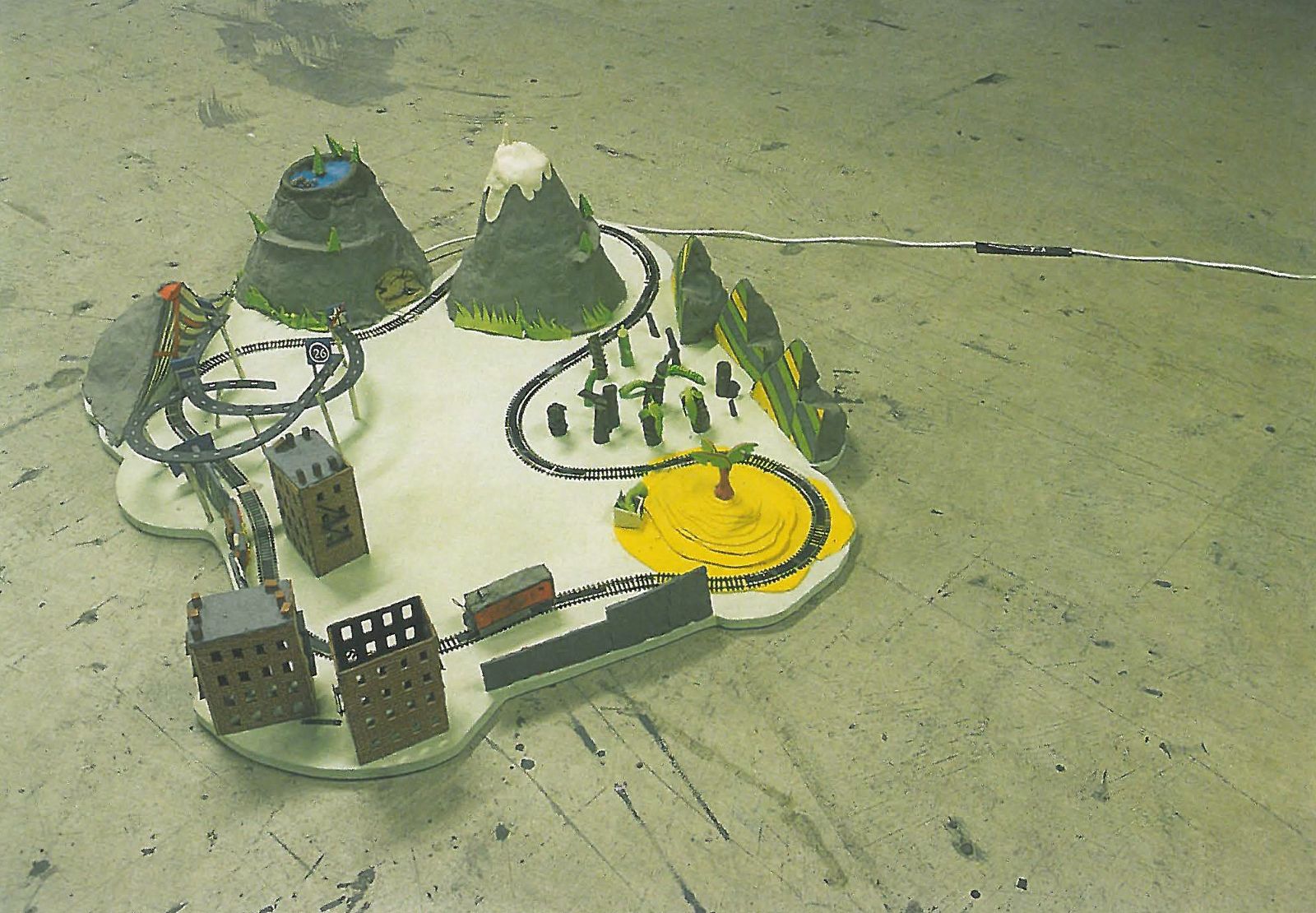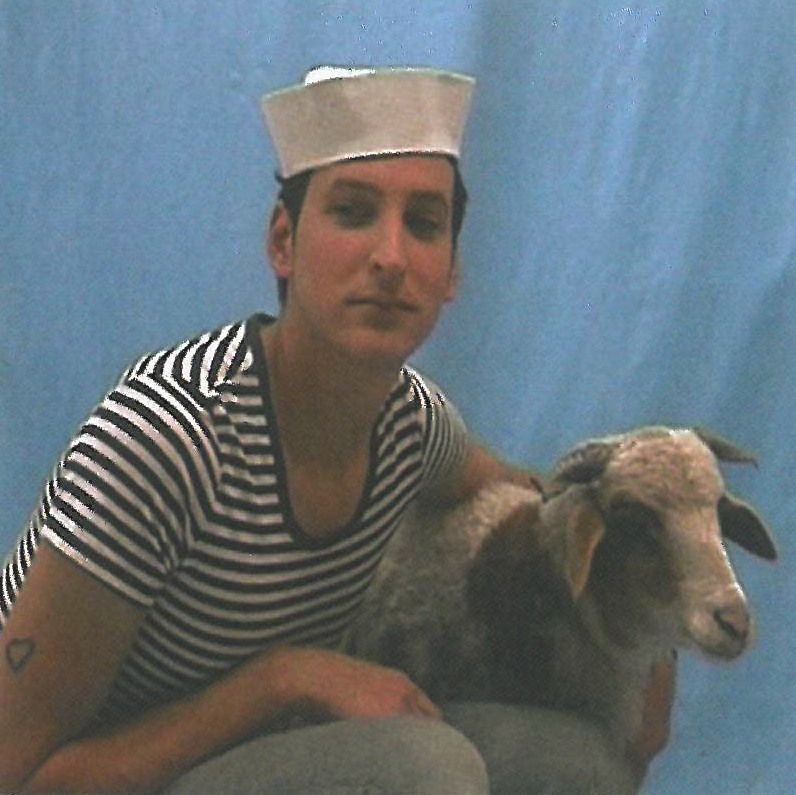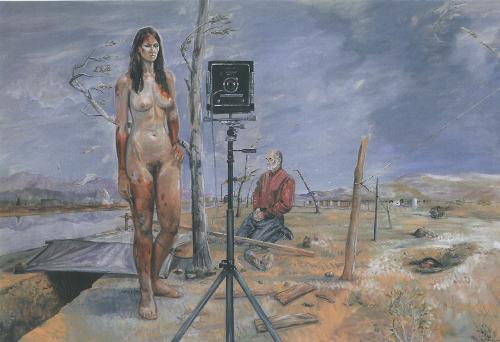
Every city needs at least one grunge artspace. One recycled interior space redolent with its previous life where artists can place what they make with some incongruity. The newest space on the block in Adelaide, an artist-run and artist-curated space, is Downtown. Located in Hindley Street, the tattoo and 'Nude Miss SA' end of town, which is undergoing an education and arts-led cultural rebirthing, Downtown used to be a dodgem car rink and retains many of the accessories of this life, especially a fabulous set of coloured lights. For those who need to know the 80s fun-parlour of Downtown was replaced many years ago by the stunning fibro-concrete funhouse Magic Mountain at Glenelg, a scene of many happy birthday lock-ins for my son and his friends, which is now in turn about to be dismantled.
Most of the team of five artists, Andrew Best, Bridget Currie, Chris Flanagan, Louise Flaherty and Viv Miller, recent graduates of the South Australian School of Art, who are the directors of Downtown have studios at the Experimental Art Foundation. Their program for Downtown (8-9 exhibitions over the next year) includes work imported from other places in Australia and around the world as well as local shows. Best is curating a show from Perth where he recently exhibited in PICA's Hatched, Flanagan is putting together a poster/video show from an artist-run space in Canada where he currently lives, and of course an exchange show is planned with an artist-run space in Melbourne, the city a mere 1000kms to Adelaide's east.
Downtown emerges onto the local scene with flair as different fun events accompany and are planned to accompany each exhibition such as a roller derby, experimental films and in March/April the launch of a new ongoing curated artists' book called Roller. There is conscious concern for the space to include multi-skilled cross-disciplinary artists who are also DJs, musicians, dancers, graphic designers, and filmmakers.

From looking at Downtown's first two shows it is possible to argue that there is a shift towards a lightness or lightheartedness of being in contemporary art brought on in part by new technologies, which make the world a smaller and more accessible place. The shift also relates to movements of both people and artworks around the globe. For example the entire exhibition of modern love stories, which consists of six videos, can fit onto one DVD.
Albie Mangels the 1980s Adelaide doyen of plans and disasters and maker of three crude adventure films called World Safari I, II and III, is the patron saint of Downtown and the first exhibition was dedicated to him. A notion of nostalgia and freedom to fail is what the presence of Mangels lends the space. Yet freedom to fail needs to be combined with visible ambition otherwise it may merely be failure.
Among some of the work in the two exhibitions at Downtown so far there has been a sense of underdoneness, not raw but simply not developed. Work on show has ranged from almost Greenbergian flat paintings by Viv Miller to light boxes somehow reminiscent of tiny homes by Louise Flaherty. Chris Flanagan's plasticine environment for a train set travelling through the history of black music although it malfunctioned (the stylus and speaker on the train passing over vinyl recordings and cardboard beats didn't really work) was intriguing and ingenious while Andrew Best's aestheticised disaster, a mock-up of a basketball hoop accident, was well-made and humorous. Of the videos on show in modern love stories the work by the curator Jim Strickland, a tongue in cheek quasi-erotic self-examination of Jim/James the great would-be lover, stood out as having been made over some time with care and thought while most of the others appeared to have been thrown together overnight.












